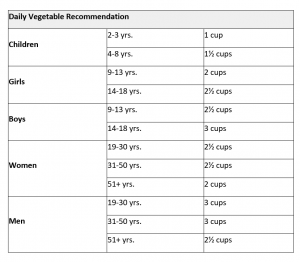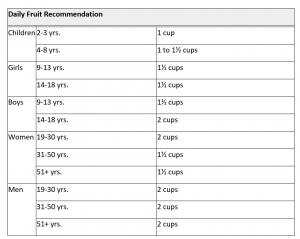14 Nourishing your body with Fruits and Vegetables
Fruits & Vegetables
 Fruits and Vegetables play an essential role when it comes to nourishing our bodies. They’re packed with many vitamins and minerals that help support our bodies by providing critical nutrients. Maintaining a diet that’s rich in fruits and vegetables can help with reducing the risk of heart disease and strokes, lowers blood pressure, prevents cancer, lowers the risk of digestive and eye problems, and even promotes healthy weight loss. Fruits and Vegetables also contribute to fiber, healthy fats, and phytochemicals, which are also essential for a well-nourished body. These nutrients all work together and affect your overall health, how your body communicates with your brain, muscle growth and function, wound healing, skin health, mood, energy, and appetite.
Fruits and Vegetables play an essential role when it comes to nourishing our bodies. They’re packed with many vitamins and minerals that help support our bodies by providing critical nutrients. Maintaining a diet that’s rich in fruits and vegetables can help with reducing the risk of heart disease and strokes, lowers blood pressure, prevents cancer, lowers the risk of digestive and eye problems, and even promotes healthy weight loss. Fruits and Vegetables also contribute to fiber, healthy fats, and phytochemicals, which are also essential for a well-nourished body. These nutrients all work together and affect your overall health, how your body communicates with your brain, muscle growth and function, wound healing, skin health, mood, energy, and appetite.
Fruits and Vegetables are packed with fiber, folate, potassium, vitamin C, and vitamin A. Nutrients that, when combined, perhaps provide hundreds of benefits. Getting fiber from vegetables may lower your risk of heart disease, help reduce blood cholesterol levels, and assist with weight loss. Fiber is very important for your digestive system; it’s crucial for proper bowel function and reducing constipation. As for weight loss, the fiber in fruits and vegetables will keep you full longer and have very few calories. Folate or also known as folic acid, aids the body in producing and maintaining new cells. Women who are pregnant or considering pregnancy are recommended to take folic acid to prevent neural tube defects, spina bifida, and anencephaly during fetal development. Potassium may help reduce blood pressure, prevent osteoporosis and kidney stones, and protect against the risk of a stroke. Vitamin C helps your body with wound healing, eye disease, and even wrinkles. Vitamin A keeps your skin and eyes healthy.
So how many fruits and vegetables should we consume daily? How much we consume depends on our age, gender, and physical activity. The average recommendation for adults is 1- 3 cups of fruits and vegetables daily. They can be consumed raw, cooked, or juice and can be fresh, frozen, or canned.


There are at least nine different families of fruits and vegetables, and based on their nutrient content, they’re separated into various subgroups. Vegetables are separated into five subgroups; dark-green vegetables, red and orange vegetables, beans and peas, starchy vegetables, and other vegetables. Dark-green vegetables like broccoli, collard greens, kale, spinach, and romaine lettuce are great vitamins and low calories. Dark green vegetables are associated with vitamin A and C, potassium, magnesium, folate, and fiber. Red and orange vegetables like carrots, pumpkin, red peppers, tomatoes, and sweet potatoes are also known to be excellent in fiber, potassium, and vitamin A. Beans and peas like chickpeas, lentils, black beans, soybeans, and black beans are a great source of fiber, folate, and minerals. Starchy vegetables are a great source of carbohydrates and fiber; however, they also have higher calories, so limited intake is recommended. Starchy vegetables include corn, green beans, potatoes, and green lima beans. Other vegetables include cauliflower, avocados, cucumbers, zucchini, and mushrooms, and due to the variety, their nutritional benefits vary.
Tips for eating more fruits and vegetables:
- Meal prep your veggies – you will be less tempted to eat unhealthy fast food. The convenience will make it easier to reach for some veggies versus junk food.
- Keep visible – keeping fruits and vegetables visible will encourage everyone in the household to eat more fruits and vegetables.
- Keep it interesting and explore! – Variety and color are key. Try new recipes and try new vegetables.
- Frozen is better than no fruits and vegetables – frozen vegetables are easy to make when you’re in a hurry and don’t go bad so fast.
- Make it fun! – Adding seasonings and sauces to vegetables within reason makes it easier and tastier to eat. Dipping fruit in dark chocolate or using chile seasoning is another popular way to make fruit fun and yummy!

